Token2049 Singapore will be held in Singapore from October 1 to 2, 2025. As one of the largest Web3 events globally, Singapore has become a hub for crypto innovation in Asia and beyond. The conference gathers entrepreneurs, investors, developers, and media from around the world, focusing on hot topics such as crypto finance, infrastructure, RWA, and AI × Web3. In addition to the main venue, thousands of surrounding events will take place across the city, including parties, seminars, hackathons, dinners, and parties.
BlockBeats has compiled several "short essays" from Token2049 Singapore, showcasing the experiences and insights of various VCs and KOLs attending the event, ensuring they don't miss out on cutting-edge trends.
Scott (Founder of Monsterblockhk.eth)
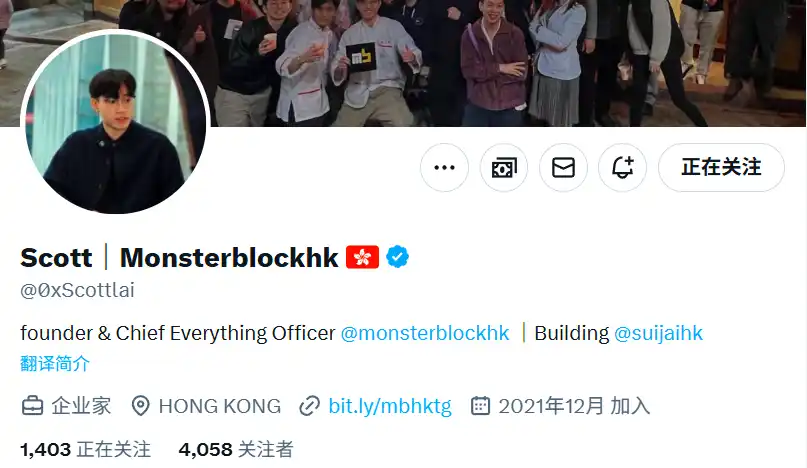
After returning to Canada from Token2049 SG, I saw many people tweeting about feeling anxious, seeing some traders and KOLs making hundreds of thousands of dollars a year while they only make ten thousand a month. This FOMO mentality can be detrimental in the long run. I initially thought the scale of SG would shrink this year because I believe the market is still in a phase dominated by BTC, ETH, and a few short-term narrative explosions, not a full-blown bull market, which is why many KOLs around me said they wouldn't come.
For me, the only worthwhile events to attend were the ecosystem activities. I went to SuiFest to meet @Scallopio, @johnny0168, and @djchrisssssss and conducted an interview about $SCA; at Solana APEX, I chatted with @wangmeili_333 about @TradeNeutral and finally met Vesper @1cryptosheep to discuss our upcoming efforts in Hong Kong.
Indeed, there were significantly fewer side events than last year, and I believe many have noticed this. If I were to relate this situation to the market, I would say: the market is genuinely not good; only exchanges are consistently making money, which is why they keep expanding. Additionally, a few ecosystem narratives are becoming overly competitive, such as ICM, which has been a hot topic recently. Because market participants are not as robust as before, project revenues are limited, and naturally, they won't want to hold events. You could say the crypto space is still lively because where people gather, there is heat, but it is also evident that this is not a time for a flourishing bull market; otherwise, why haven't we seen a massive influx of external funds or the previous generation asking how to buy coins?
Returning to the FOMO mentality mentioned at the beginning, this is also something I learned during this work trip. Many people went to Singapore for conferences or were introduced to project BD by acquaintances, and they returned with a wealth of information, significantly increasing everyone's general understanding.
I think the crypto space is like life; the key is not how many ways there are to make money but whether you can find the survival path that suits you best. If someone can make hundreds of thousands a month through trading, it is the result of hundreds or thousands of days of backtesting and resource investment. Conversely, they may not be good at community management or writing articles, right? The most important thing is that we see other ways to make money in the market, allowing us to reflect on whether what we are doing has valuable references for our growth, rather than copying what others do. "Not reaching high nor settling low" comes from this. Everyone in the crypto space is deeply cultivating what they are good at, finding their direction, and continuously researching to be the best. Over the long term, it is still positive EV; why not pursue it?
Starry Lucky Star (Crypto KOL)
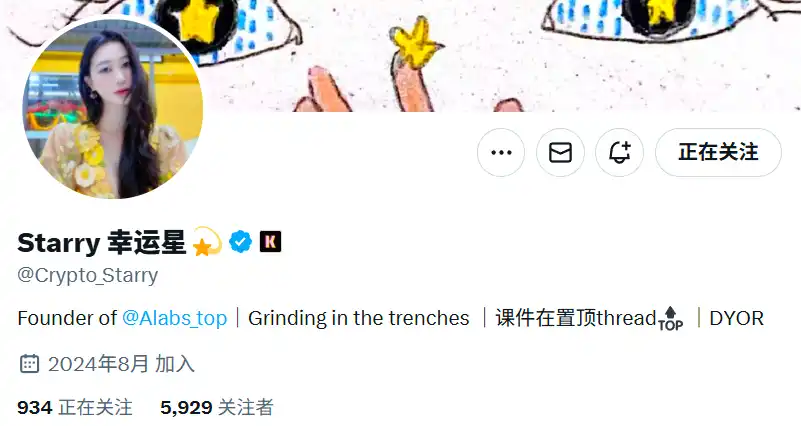
Five reflections from Token2049:
Fewer people are attending: Although hotels in Singapore are expensive this year, it should mostly be due to National Day and F1, and they are still not as pricey as last year. However, this does not mean that the crypto space is empty; more and more people are realizing that what is truly beneficial for ordinary people is "sitting quietly" rather than "socializing." PS: @EnHeng456 should be an exception; I would also like to learn how he transitioned from socializing to trading profits.
BD dominates the crowd: I went to Singapore to fulfill work tasks, knowing that most attendees are BDs, but I still engaged in small talk at the venue. Indeed, most were BDs or working in marketing agencies, out to generate business, with only a few KOLs present, which was quite rare.
Private exchanges are the most useful: You can only catch big shots and core circle people in private settings; public speeches don't count, and you can't engage with people during public talks. Networking upwards and building connections, private settings are the most effective. This year, it was interesting to see @gmgnai host an invite-only yacht event, where numerous English trench traders excitedly tweeted throughout the night, such as @ihateoop and @orangie. In contrast, projects that held public events burned money but had minimal impact.
The above phenomena indicate that the upward path for ordinary people is being compressed: In the past, it was still possible to meet a few big names at conferences. Now, the only useful events are invite-only private gatherings. If you lack capability or can't pretend to have capability, it is challenging to meet impressive individuals.
Disillusionment: Seeing and amplifying others' shining points, learning. Seeing through the leverage that others quietly add when they speak, disillusionment.
Zixi.bnb (CEO of StableStock)
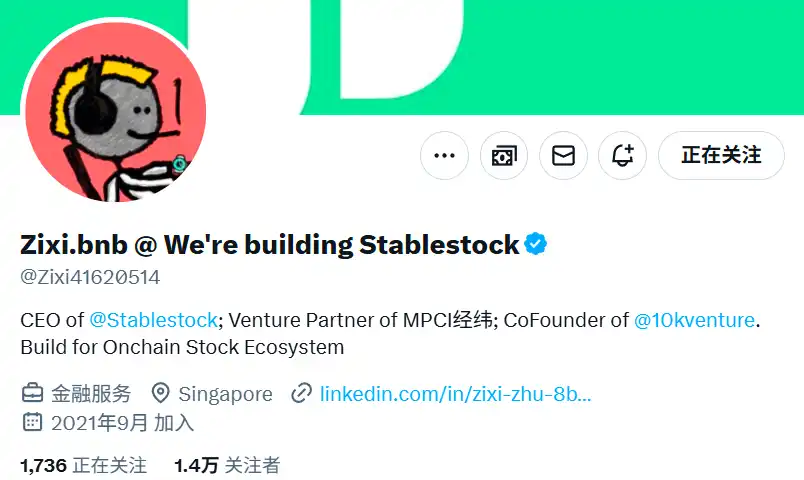
This is my fourth time attending 2049 in SG, and my first time attending as a founder after transitioning from investor/GP. In the past three 2049s, it was more about the "noise," participating in various events and exhibitions without focus, leading to exhaustion and low output efficiency. This time, I was clear about what I wanted, so I focused on a few small events/meetings, and surprisingly, it was not tiring at all, and the results were maximized.
Since Stablestock will launch our first batch of stock tokenization products on the BNB Chain next week, we organized a small private dinner, inviting our MM/KOL/partner institutions to dine together. With the number controlled to under 50 people, the communication effect was excellent (and it was also the first time in my four years attending 2049 that I left an event feeling full).
The events at the end of September 2049 and several events in August at ETH NYC gave me a significant impression: RWA/Tokenization stock is consuming the world. An investor I met at 2049 was very optimistic about us, stating, "If stablecoins are L2 for the dollar, then tokenization stock is L2 for stocks, and it is the new downstream in the stablecoin ecosystem, also the L3 for stablecoins." The currently validated direction for RWA is stablecoins/dollars, and the next batch of validated tracks will be stocks that are more transparent/easy to redeem and mint.
Now, not only crypto investors/exchanges but also many traditional industry investors are paying attention to Robinhood/Ondo/Xstock and Stablestock, looking forward to using our platform to bridge TradFi and DeFi, building new products on-chain with new assets. Besides ETFs and lending products that exist in the traditional world, I see crypto developers wanting to use tokenization stock to continue building stablecoin companies, which is a vast thought process; they can collaborate with web2 fintech giants, reaching countless web2 brokers, bringing immense stock liquidity on-chain.
Many founders/investors indeed have expansive thought processes; every innovative idea is an opportunity in the StockFi track. I welcome relevant entrepreneurs to reach out to me to discuss ideas and grow the StockFi track together.
CHI Labs
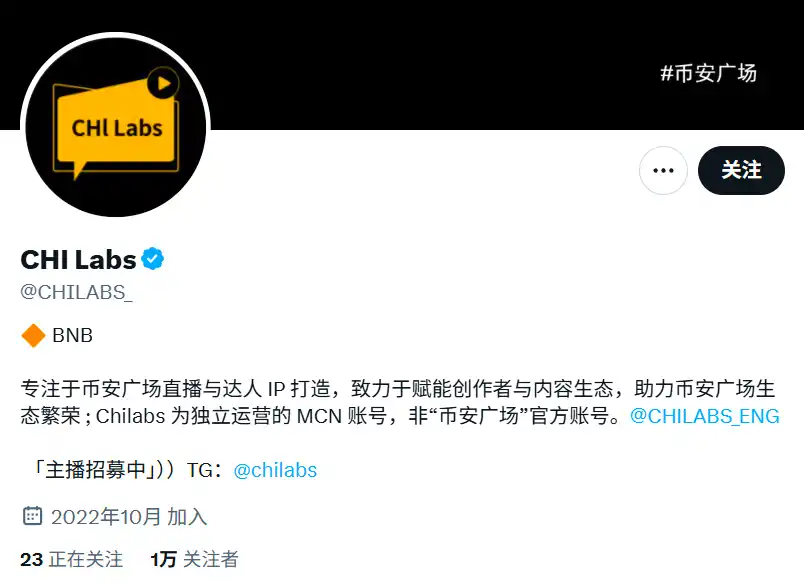
Experiences from Token2049:
- Go to where users make decisions and speak in a language they understand.
The hustle and bustle of Token2049 has come to an end. As the festivities fade, a sharper question emerges than any Alpha: as project parties and builders, where are the Chinese users? This year, over 500 events in Singapore turned Marina Bay Sands into a temporary "crypto sanctuary." However, beneath the feast, a silent migration of Chinese users' attention has long been settled.
- The brutal reassessment of attention value
For attendees who have participated for three consecutive years, the venue of Token2049 itself is a brutal history of rise and fall. Last year, one had to queue to meet star public chains and L2 concepts; this year, the surrounding events are as deserted as a performance art piece. In stark contrast, projects like Hyperliquid and Aster, which are closer to trading and application layers, have become new traffic black holes, with their booths and events packed with users eager to find the next opportunity.
Attention is rapidly shifting from grand narratives to "wealth codes I can participate in immediately." The rise and fall cycle of projects has been drastically compressed, essentially reflecting the market's brutal reassessment of "attention value."
- The "cognitive mismatch" in marketing: Why is Twitter advertising failing?
During the conference, we chatted with many founders of popular projects, and almost every founder expressed similar concerns: "The data in the Chinese market is terrible (The data is shit)." Unlike South Korea and Western countries, where Twitter is the mainstream platform, they face the same dilemma in the Chinese market: investing huge budgets on Twitter yields participation data that does not match real growth. This is not a strategic misstep but a profound "cognitive mismatch." We need to consider a fundamental question: Who are Chinese users, and where are they?
The "existing user" dilemma on Twitter: The Chinese crypto circle on Twitter resembles an "industry inner circle" composed of KOLs, VCs, project parties, and media, also known as the "existing market." The users here are battle-hardened and immune to marketing jargon; they seek in-depth research reports, technological breakthroughs, and early reliable Alpha. Your "broad bombardment" marketing is merely noise to them, and speaking to them feels more like "self-indulgence" within the industry. New users, however, do not know how to find crypto information on Twitter.
Where are the real "incremental users"? Now, let us depict a true new user in the Chinese market—an "outsider" attracted by Bitcoin's new highs, Trump tokens, and stories of friends getting rich. His time and energy are precious, and his core demand is "how to participate quickly, simply, and safely?" His path is frighteningly clear:
Step 1 (5 minutes): Download Binance at a friend's recommendation. Step 2 (30 minutes): Understand the basics of OTC and trading operations.
After that, due to user habits and path dependence, he prefers to complete 99% of his crypto lifecycle within this app. Why? Because the exchange solves his biggest pain points: trust and efficiency. In a world of information explosion and rampant scams, the exchange's app is not just a trading tool; it is his "information center" and "decision-making brain."
For a long time, he has no interest in learning complex DeFi Lego on Twitter, cannot distinguish between various "Rollup" technologies of L2, and does not know how to filter information. He would prefer to track market hotspots through the exchange's "square" or "discovery" page, look for potential wealth codes in the new coin rankings, and participate in new launches with one click on the Launchpad. For him, the exchange app is the entry point for information, the decision-making hub, and the trading terminal.
An undeniable fact is that the entire mindset of new users will be firmly locked by this super app of the exchange. Countless project parties are still competing on Twitter, trying to educate users in the Chinese market who do not need education, while their true potential users are just a layer of glass away, waiting to be discovered in the exchange's traffic pool.
- Go to where users make quick decisions and speak in a language they understand.
In summary, the era where growth could be driven solely by storytelling on Twitter is outdated. The current breakthrough point is to initiate diversified marketing, rather than relying solely on Twitter for "cross-platform traffic diversion." It is more necessary to directly enter the "decision-making territory" of users. Project parties need to shift from "broad bombardment" to "precision guidance," accomplishing three things in the precise user core battlefield of Binance Square:
- Be seen: Effectively showcase yourself while users browse information on Binance Square.
- Be understood: Explain your value in the most straightforward language that closely relates to "wealth codes."
- Be traded: Allow users to interact or trade with the lowest threshold at the moment of interest.
This is precisely the direction ChiLabs is going all in on. We choose to go to Binance Square, the endpoint of traffic.
BruceLLBlue (Crypto Investor)
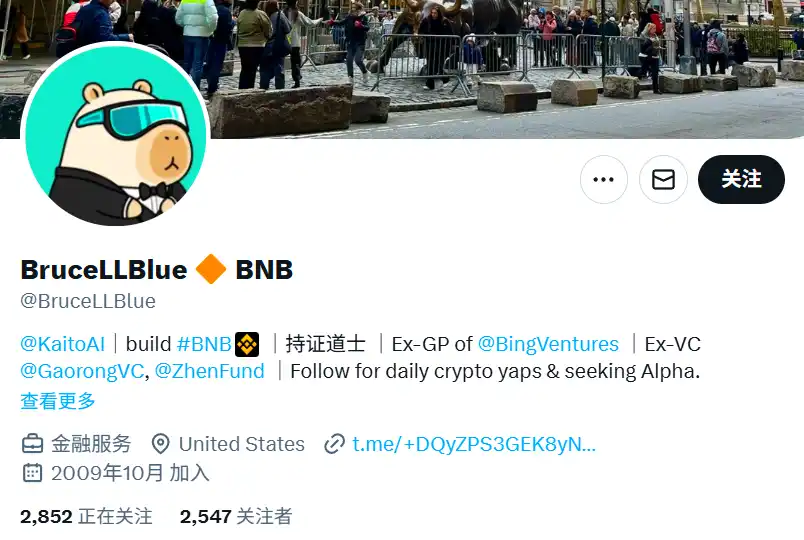
Here are my biggest impressions from this year's Token2049:
Stablecoins and RWA are merging with traditional finance; everything can be RWA, and many institutions are gathering to create their own DAT projects.
Traditional institutions and Wall Street are rushing in, and the pricing power of crypto is gradually being lost; regulations are becoming clearer, and real technology is starting to land.
Many Asian VCs that only do primary investments are laying off, transforming, or even shutting down due to low investment returns and the difficulty of raising new funds.
Infrastructure is slowly retreating, and even events are seeing low attendance; consumer-facing projects like @moonbirds and @pudgypenguins are packed with crowds.
AI and crypto are accelerating their integration; the agent economy is taking off, and Info-Fi is replacing many traditional agencies, with AI-type projects gradually finding their application scenarios.
In addition to exchanges, significant sponsors this year include @Polymarket and @DWFLabs, with rumors that Polymarket will conduct TGE in Q4.
Dave.bc1q. (@0xUClub President)
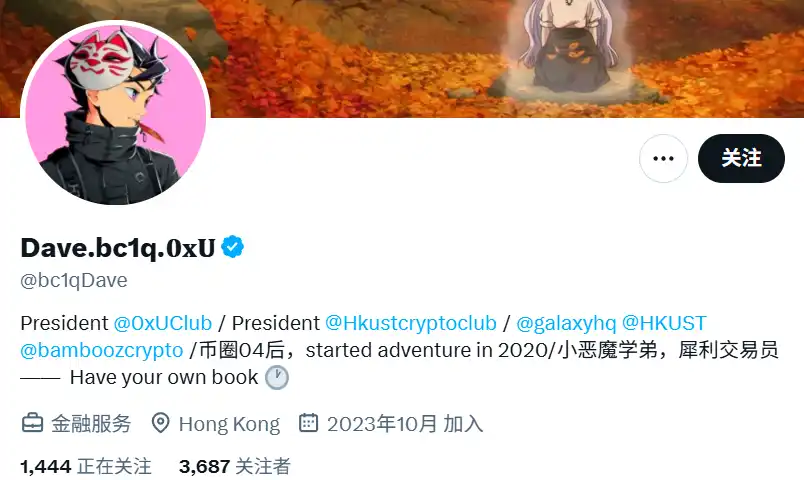
Innovation exhaustion, capital-driven—an illusion of prosperity beneath Token2049. The social model of this year's 2049 marks a large-scale paradigm shift. There was a particularly popular article these past two days titled "Seeing an Economic Upswing at Token2049." I don't want to critique this article too sharply, but first, the author is good at titling. Secondly, they haven't personally attended the conference to chat. The official writers are debating. What I see more is innovation exhaustion, liquidity anxiety, and capital-driven large illusions built on a foundation of superficiality.
The impression given by major ecosystems is one of innovation exhaustion: old narratives, old methods, and the old foundation of chaos. Since I have friends in some ecosystems who might see this article, I won't be too clear; let's abstractly comment on it.
There are no interesting projects emerging in real business. Either they are repeating previously mentioned methods, some of which have even been debunked, or they are whimsical ideas without solid business backing.
The direction of foundation/project leaders is unclear or quite foolish. This is also a kind of helplessness because they do not know which direction to take and can only choose a somewhat reliable path.
Exchanges are the most lively institutions at 2049, but behind the excitement is severe liquidity anxiety. There are no retail investors left, and even traders are scarce. After seeing the main venue, I was very disappointed; I jokingly told a friend that this is "a gambling platform hosting a pyramid scheme conference." Of course, it's not right to call them a gambling platform. However, exchanges indeed filled the main venue with booths, and everyone was shouting, revealing only the severe drying up of liquidity in the market.
This leads to the next characteristic: capital-driven. The current business paradigm is about gathering small groups and holding private meetings. Familiar faces in the full-chain ecosystem conspire together from asset issuance to the final liquidity exit. Money is hard to earn, yet in the context of an impending bull market, it seems too easy to earn. But what business can make money? Project parties, shells, VC incubators, agency market makers, and exchange buying communities are all trying to do something together.
This section names the entire chain ecosystem; family members, don't misunderstand, I'm praising you. I think this model is smart and effective, a version of the answer. Therefore, the above model of forming small groups is what I believe is the current version of the answer; the previous approach of large BD and large networking is no longer suitable. I am also forming a small alpha team and welcome teachers to communicate more.
For survival: I did not say any specific project is bad; SOL has become a darling of institutions, Hyperliquid is gaining fame and fortune, and OKX is leading the way in its home turf. Everyone is doing well and has a bright future.
免责声明:本文章仅代表作者个人观点,不代表本平台的立场和观点。本文章仅供信息分享,不构成对任何人的任何投资建议。用户与作者之间的任何争议,与本平台无关。如网页中刊载的文章或图片涉及侵权,请提供相关的权利证明和身份证明发送邮件到support@aicoin.com,本平台相关工作人员将会进行核查。




